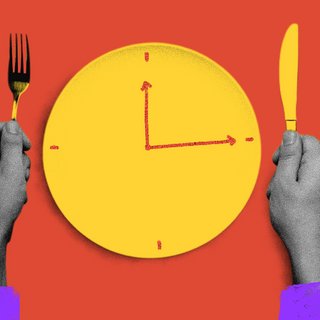
Screaming Relieves Stress, Rage — Can it Be Therapeutic?
Scream therapy is controversial among psychologists — but for women, it’s a tool to express pent up rage.

At the onset of the Covid19 pandemic in 2020, Iceland’s tourism board offered people the opportunity to record a scream, wail, or similar noises on the “Let It Out” site, which would be played on various speakers across the nation’s vast and remote landscapes. “We feel this is just what the world needs,” Visit Iceland’s Sigríður Dögg Guðmundsdóttir told Condé Nast Traveller. “[Iceland’s nature] is the perfect place to let out our frustrations.”
Scream therapy, as it’s currently known, is not a new concept—in the 1970s, psychologist Arthur Janov developed the idea of ‘primal therapy’. Based on the idea that neurosis is the result of repressed childhood trauma, or ‘primal pain’, Janov hypothesized that screaming and other physical outlets could release this trauma and make way for healing. In his book “The Primal Scream,” Janov described ‘primal pain’ as “deprivation or injury which threatens the developing child… It is not hurt as such which defines Primal Pain but rather the context of the hurt or its meaning to the impressionable developing consciousness of the child.” Treatment would occur in offices filled with cribs and toys, where patients were encouraged to suck their thumbs and engage in other infantile behavior; only when Janov’s patient had reverted to their “former infant state might they access the Primal Pain that they had repressed.” The pain would then be let out however necessary: crying, violence, and of course, screaming. Over the duration of the three-week long course, patients would undergo individual therapy in isolation, and were encouraged to journal their experiences. Janov’s primal therapy was a fairly popular notion at the time, spawning clinics nationwide and largely due to Janov’s host of elite patients which included John Lenon, Yoko Ono, and James Earl Jones of Darth Vader fame.
Today, primal therapy’s popularity has declined, partly due to its lack of peer-reviewed methodology and has its fair share of critics within the psychology community, who remain unconvinced at its prodigious results. A reason for this is primal therapy’s rejection of all other forms of therapy, including cognitive behavioral therapy (CBT), which has been notably successful in addressing a wide range of psychological issues, including CPTSD (childhood post-traumatic stress disorder). Yet, in combination with other treatments, the modern cathartic screaming has its benefits. According to Ryan Howes PhD, a clinical psychologist in California, “[L]etting loose of the pent-up emotion is freeing, like spitting poison out of your mouth.” When used in conjunction with other meditative routines or psychological treatments, scream therapy has significant benefits.
Related on The Swaddle:
Why We Scream When We’re Scared
So far, the research on scream therapy is limited, as it’s considered a controversial method and even pseudoscience for a significant portion of the scientific community. Yet, according to Professor Pragya Agarwal, a behavior and data scientist, who introduced her daughters to the practice during the pandemic, the aim was simple. “I wanted to create a space where they could express any frustration and stress about their situation,” Agarwal told BBC Radio4. “This was a way of letting go for a few minutes during the day. A free non-judgement space.” She shared how the expectation of girls to be “all things nice” and to repress emotions like anger is “harmful for our physical and mental health.” Dr Rebecca Semmens-Wheeler, from Birmingham City University’s Psychology department, said that scream therapy has pros and cons: 1) It can help you release difficult emotions; 2) It can bring you a sense of community; 3) It can be empowering; 4) It can help you find strength; and 5) It can release helpful, and not helpful, hormones. However, “screaming to release emotions probably needs to be done with caution,” Semmens-Wheeler warns. While its cathartic effects are notable, screaming isn’t “necessarily a healthy emotional regulation strategy”—she likens scream therapy to dynamite, saying that while it is broadly effective, the subtlety and awareness needed to process emotions properly is missing. It’s used primarily to reduce tension, frustration, and anger in the short term; experts say that it should not be used solely and in the long term, but instead used with more standard forms of psychological treatment.
The neurochemistry and physiological effects of screaming aren’t in the act itself but in the relief that follows. The “rush of endorphins and peptides produced in the pituitary gland and central nervous system … act on the brain’s receptors to increase pleasure, reduce pain, and increase strength,” says Dr Bryan Bruno from New York City-based Mid City TMS. Screaming makes your body “more alert” and helps to release muscle tension caused by bottled-up emotions. For Zoe Aston, a London-based psychotherapist who consulted on Visit Iceland’s “Let It Out” initiative, scream therapy should be used in conjunction with other, traditional therapies, comparing it more to a mental-health workout. “[Screaming] creates a chemical reaction that is similar to the one you get when you exercise—you get a dopamine hit and some endorphins going,” she told Well+Good. It also helps to release the buildup of cortisol, the primary stress hormone. The social taboo behind screaming and scream therapy is notable as well. “There are cultural norms that prevent people from engaging in particular ways of expressing things,” Aston shared. In addition to the cathartic effects of screaming, “you are also absolutely busting the shame that goes with that cultural norm,” and thus, validating your right to feel those often inappropriate feelings.
The official medical prognosis of ‘female hysteria’ has existed for a significant portion of history, encompassing everything from menstrual pain to “tears and laughter”; the learned men of Ancient Greece blamed the wandering uterus (or hystera) for the resulting laundry list of physical and medical conditions. These include large shows of emotions as well, explaining why taboo against screaming is also gendered—making it particularly cathartic for women. People have an issue with angry women, Soraya Chemaly writes in Rage Becomes Her: The Power of Women’s Anger, since “anger is considered a marker of masculinity”; the weight of gender-roles and the expectations they bring are heaviest on women, who deal with stifling all their lives. Whether at work, at home, in relationships, or with their children, there are plenty of reasons why women are angry, yet the expression of this anger is met with accusations of “hysterical” or “overly emotional” behavior and so often, women’s anger is turned inward and manifests as depression. According to 10 years of data from the Gallup World Poll, women are getting angrier and the gender rage gap is increasing—in 2021, for example, 40.6% of Indian women said that they felt significant anger during the previous day compared to 27.8% of men. It’s no surprise why—the state of reproductive rights, the increase in gender based violence (GBV), and the overall decrease in equality and progress over the past decade could give anyone a justifiable reason to scream.
Related on The Swaddle:
Women in Switzerland Staged a Mass Scream to Protest Domestic Violence, Wage Gap
Sarah Harmon, a 39 year old Bostonian, held her first ‘primal scream gathering’ in 2022. Trapped and exhausted by raising their children, building their careers, and managing a household, these mothers were in desperate need of an outlet. Gathering on a cold January night at a high school football field, 20 mothers abandoned their worries for a glorious 20 minutes of screaming and catharsis. “It was so nice to feel out of control for the first time,” one mother told Harmon afterwards. In an interview with the New York Times, Harmon shared how her young daughters were driving her “absolutely nuts” and that, combined with the frustration over the children-under-5 vaccination issue and the pandemic in general, pushed her to organize this gathering. “It’s just amazing how light you can feel after you do that … I slept better.”
Similar gatherings have been held by women, particularly mothers, across the world. Psychiatrist Dr Pooja Lakshmin, an expert on women’s health, told MSNBC that the impact of comradery cannot be understated. “There’s power in seeing that you are not the only person who is suffering in this particular way,” she said. “When a woman sees that a group of mothers has been given voice to the deepest feelings and thoughts that she’s been holding inside for the past two years, of course she wants to scream it from the rooftops.” McKinsey’s 2021 Women in the Workplace report spotlighted that the pandemic had a disproportionate effect on women—the issues aren’t just limited to balancing careers and domestic responsibilities, as women at all levels have a heavier, but unrecognized and uncompensated professional workload. Back home, the percentage of working women in India plummeted to 9% according to a Bloomberg report in 2022—it is little surprise that the accompanying anger warrants an outlet. In New Delhi, for example, 27-year-old Deepika organized a scream group of 150 women, citing both their rage over the city’s violence against women and girls, and their own personal frustrations. “There is a theme in India of keeping women silent,” she told the Guardian. “This is my small way of saying ‘no, we are here, we have something to say and you’re going to hear it’.” The group is fighting against the patriarchal notion about hiding women’s pain and fury: “Why is anger seen as such a dangerous emotion in women?” Deepika asks. “We have things to be angry about but if we express it we’re seen as crazy or hysterical or out of control.”
The benefits of scream therapy, especially for women, cannot be understated. It’s a way to vent the additional stressors of the last few years, and that too without fear of shame or reproach. By forming screaming groups, women have “the opportunity to express that rage in a supported environment,” Dr Miranda Yates, an organizational psychologist at the University of Queensland, told the Guardian. Whether in an open field, into a pillow or down an abyss, the act of screaming lends itself to being a method of catharsis—one that is as old as humanity itself.
Akankshya Bahinipaty writes about the intersection of gender, queerness, and race, especially in the South Asian context. Her background in political science and communication have shaped her past multimedia and broadcasting experience, and also her interest in current events.
Related


HPV Vaccines Don’t Just Prevent Cervical Cancer, But Also Penile, Anal Cancers. Men Should Get it Too.
